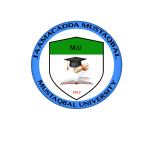Bachelor of Pharmacy
This department is in line with the global revolution in the training of health professionals which has been brought about by demands for a health worker with a whole new set of competencies to complement the existing clinical proficiency.
Pharmacy department is responding to the global and region challenges to produce an increased number of quality pharmacy graduates that are required to promote equity in health care provision, and to be more socially accountable to the Somali population
Program Goal:
The overall goal of the program is to produce graduates with appropriate competencies to address the health needs of the individual, family and the community in Somalia, the region and globally.
Program Competencies
The Bachelor of Pharmacy Program produces pharmacy graduates with competencies in the following domains:
1. Medical and Pharmaceutical Knowledge
2. Clinical skills and patient care
3. Critical inquiry and scientific method
4. Professionalism and ethical practice
5. Interpersonal and communication skills
6. Population/ public health
7. Continuous improvement of care through reflective practice
8. Health System Management
Admission Requirements
Admission criteria in health training programmes have far-reaching implications in education and training processes and the outcomes of such programmes, thus, the graduates and the quality of health services. Consideration of the admission requirements to the Community Health Nurse programme is in light of the prevailing health situation in Somalia.
Candidates for direct or in-service admission into the course programme must possess the stipulated qualification requirements in Somalia, and the equivalent, especially in neighboring countries.
Any student seeking admission from any MU Department of Nursing to pursue the course should fulfill the following requirements:
1. Be not younger than 18 years of age.
2. Submit secondary leaving certificate with minimum average marks of not less than 60% from recognized school and umbrella and passed the Somali Government centralized exam.
3. Application for admission.
4. Pay the registration and enrollment fees as per required.
5. Fill the application form fittingly.
6. Successfully pass the university entrance examination,
7. Bring the following documents with you:-
a. Original secondary certificate (both from the school & the government)
b. Original national identity card/passport/birth certificate
c. Two (2) certified clear sets of photocopies of (a) and (b)
d. Seven (7) certified passport sized photos
Assessment Approaches
Formative
Formative assessment is used as a bridge between learning and teaching. It allows instructors to gather real data about students as they work, then adjust their instruction to better serve students at their current learning level. In nursing education, formative assessment has been proven to be highly effective not only for student learning, but for faculty teaching and, as a result, increases the overall quality of learning.
Formative assessment used in the department include; Continuous Assessment Tests, Assignments, Quizzes, Random Assessment Tests, End of Semester Examinations and Supplementary Examinations.
Summative
The goal of summative assessment is to evaluate student learning at the end of an instructional unit/module. Summative assessment include; Final Qualifying Examinations (theory), Final Qualifying Examinations (theory and practical), End of Semester Examinations, and Promotional Examinations.
Teaching Approach/Strategies
Teaching approach is a set of principles, beliefs, or ideas about the nature of learning which is translated into the classroom while teaching strategy is a long term plan of action designed to achieve a particular goal. These include the following; Informal Lectures/Discussions, Modified Lectures, Group Discussion, Small Group Discussions, Demonstrations and return demonstration, Role plays, Team Teaching, Project Assignments, Case Presentations, Nursing Care Studies, Self-Directed Learning, Programmed Learning, Simulations, Educational Trips, Film Shows and Problem Based Learning.
Teaching Aids/Instructional Materials
Include the following; Chalk Board, White Board, Flip Chart , Flip Charts Stand, Posters, Poster Stand, Videos, Videos tapes, Video camera, Slides, Slide Projectors, Models of various body parts/organs, Study guides, Lesson plans, Course outlines, Computers, Laptops, LCD projectors, Over Head Projectors, Human Skeleton, Dummies, Human Skeletons, Manikins, Simulators, Real Human Beings (Simulated Patients), and Real Human Body Parts.
